Netzley/Yender House
Introduction
Text-to-speech Audio
Images
Front view
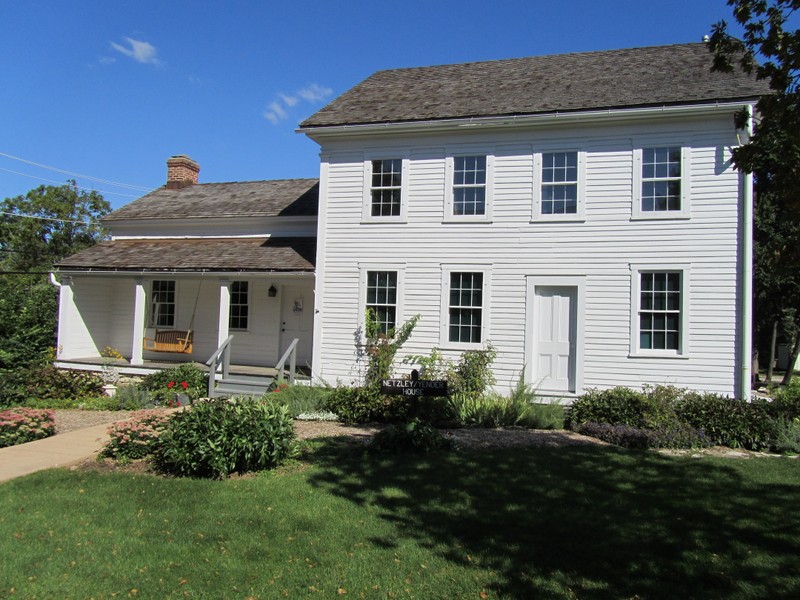
Back and side - notice the bee slots on the left near the attic area
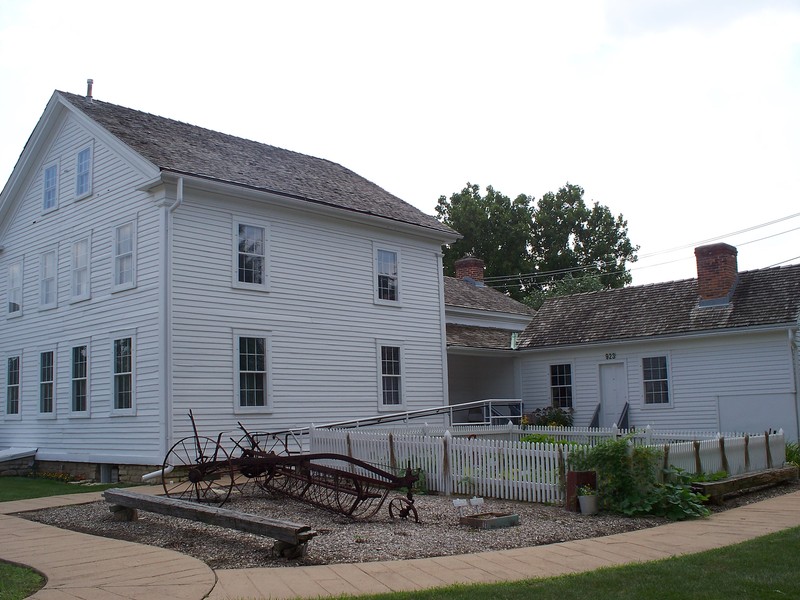
Hearth Room. This was the home's family entryway and family room
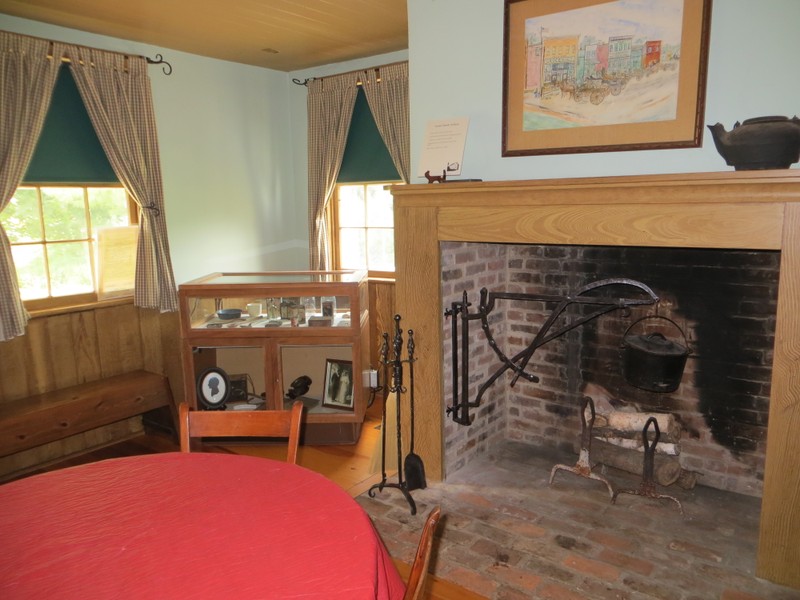
Wood graining is the process of painting something to look like wood. The framed area shows original wood graining on a first floor wall done by the Netzley family in the 1800s. The area outside of the frame was painted by volunteers during museum restoration.
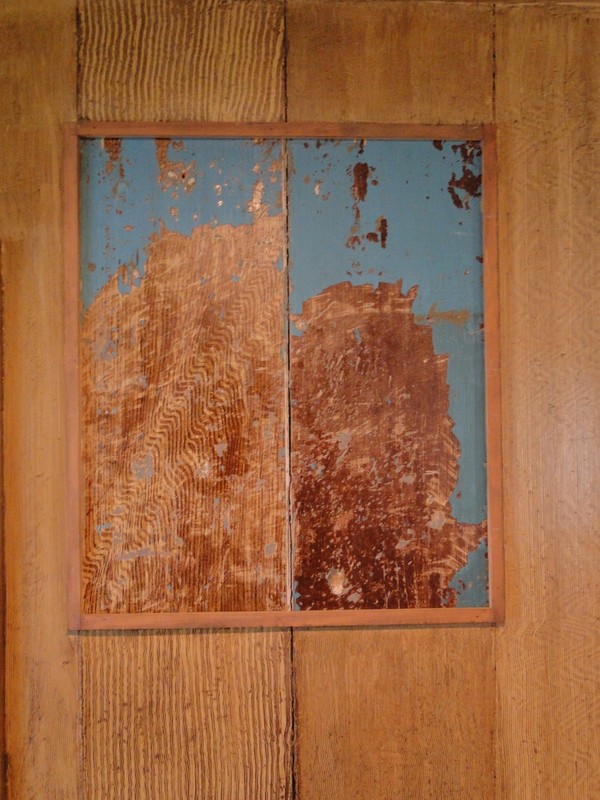
Double Parlor. The house's wallpaper patterns were recreated in the 1990s based on original pieces found during museum restoration.
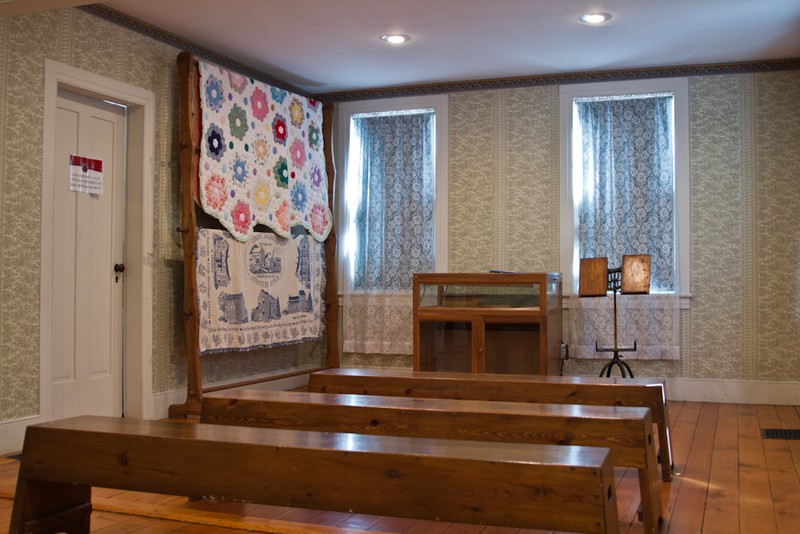
Double Parlor, set up for church services
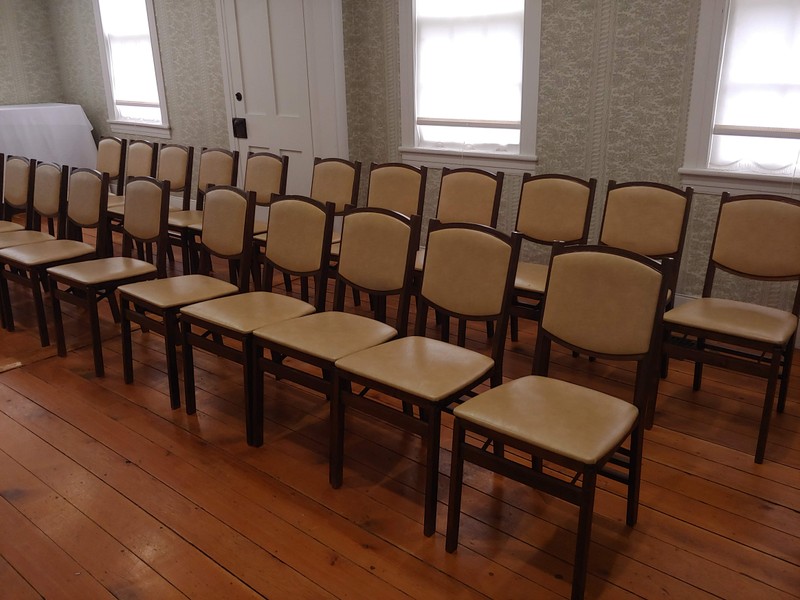
First floor bedroom. 3 of the Yender's 4 sons were born in the bed shown here.
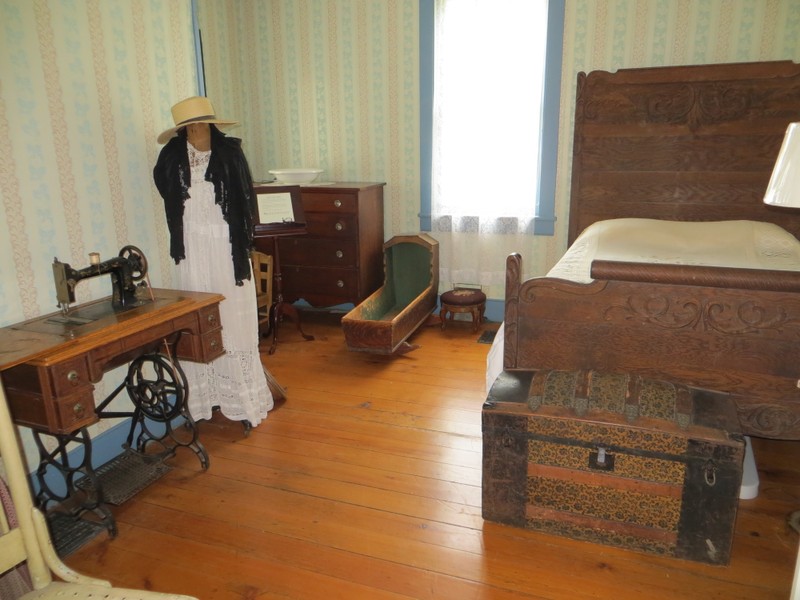
Original stairs leading from the Double Parlor to the second floor bedrooms
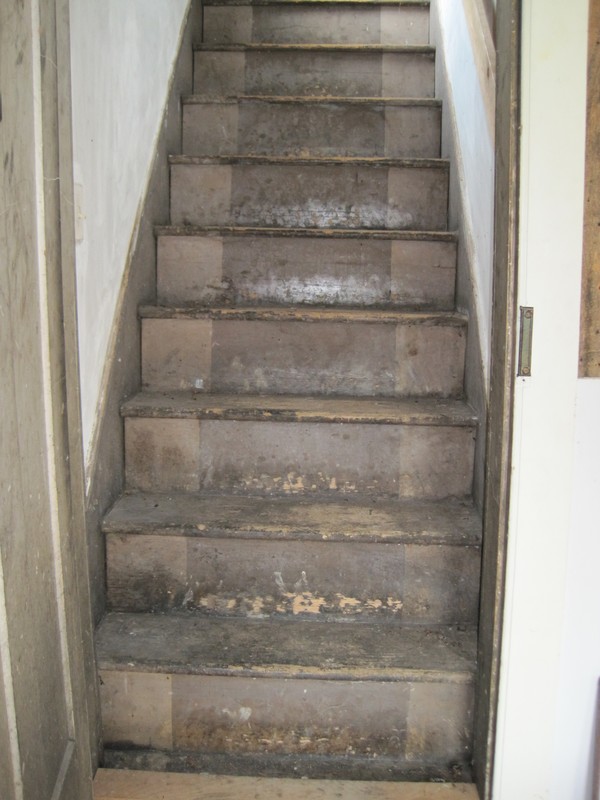
Door from the Double Parlor second floor bedrooms looking into the bedrooms above the Hearth Room.
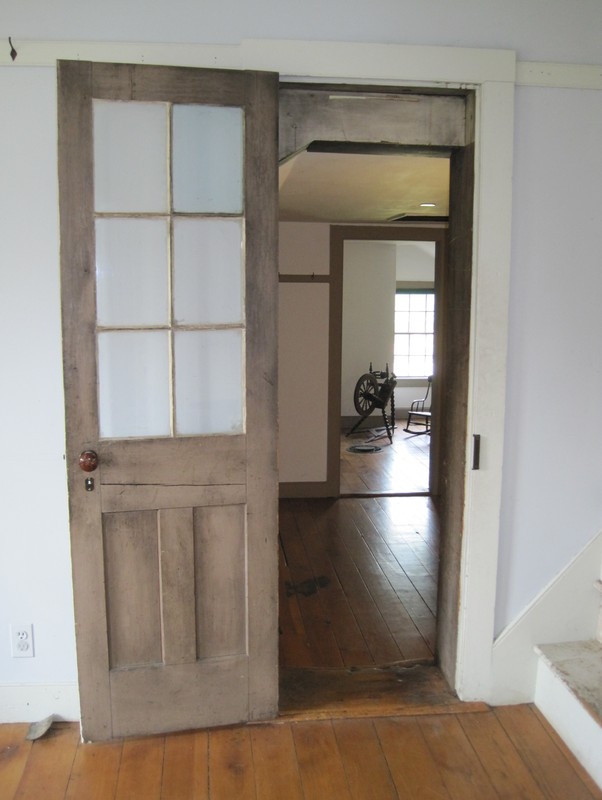
Second floor children's bedroom. All 10 of the Netzley's children slept here until the Double Parlor portion of the house was completed.
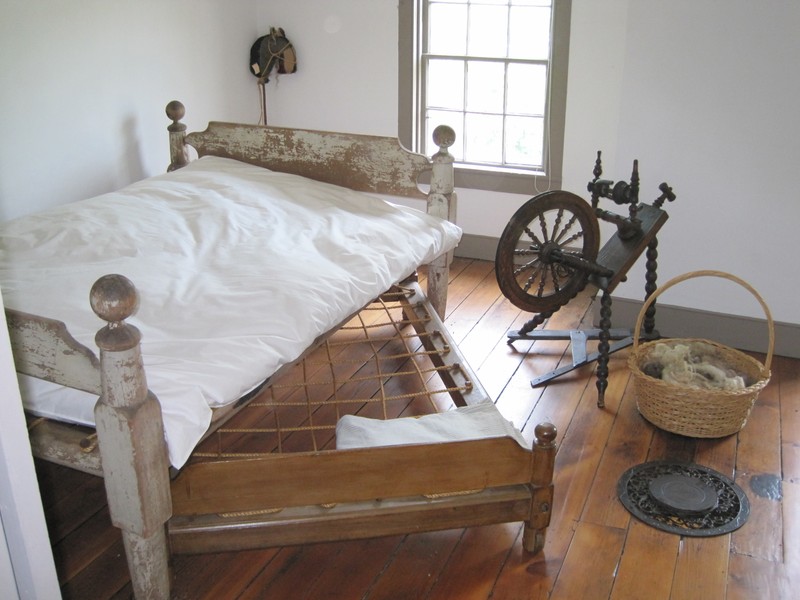
This decorative vent in the Hearth Room ceiling allowed heat from the fireplace oven to rise into the second floor children's bedroom
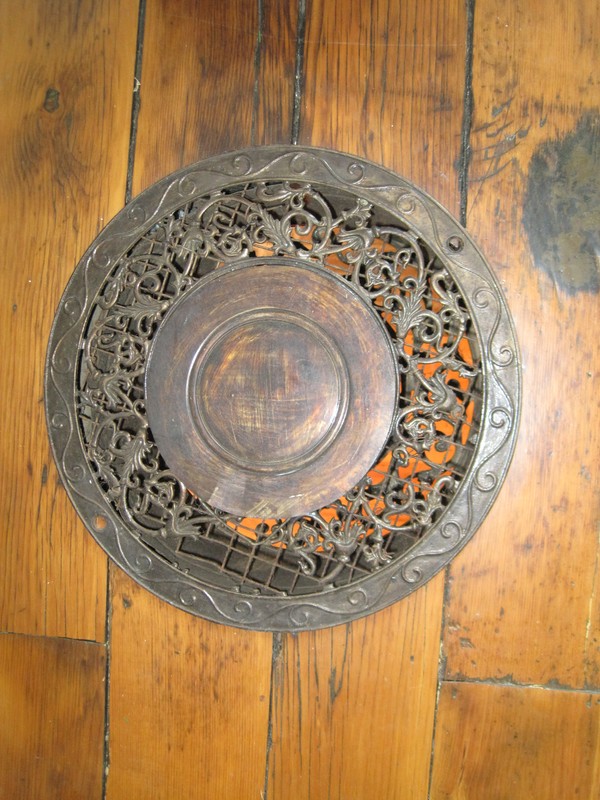
Summer Kitchen
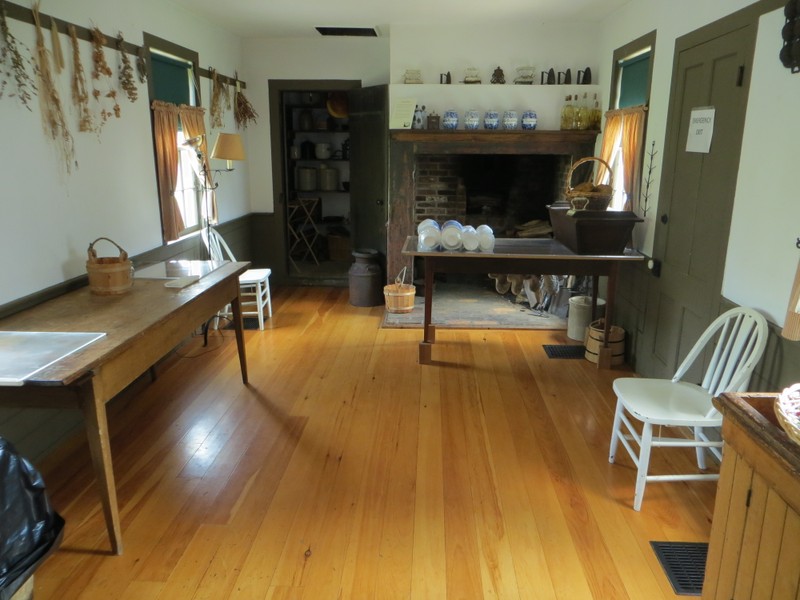
Summer Kitchen beehive oven
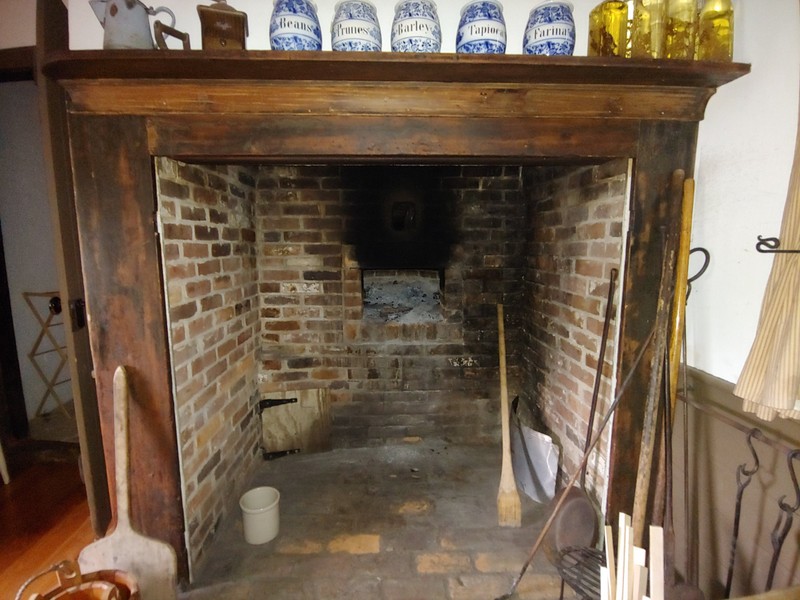
Summer Kitchen Smoke Room
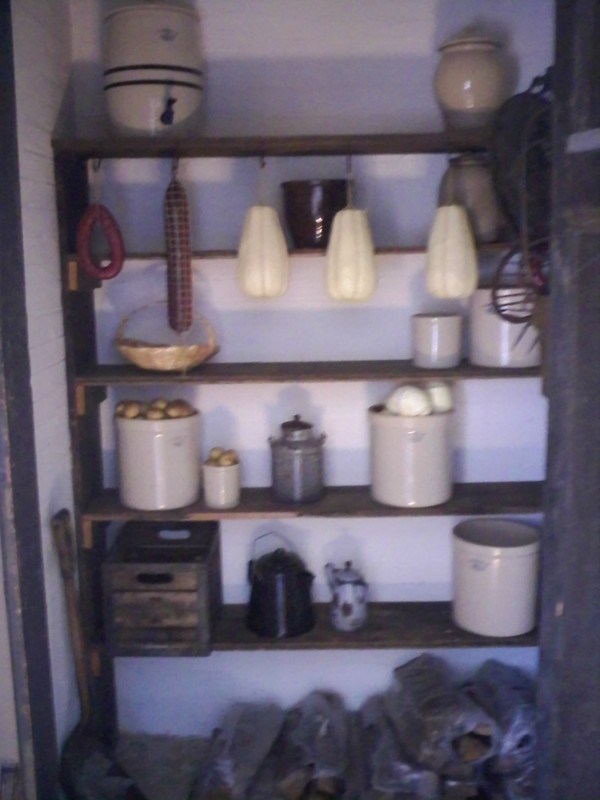
Model Trains: To Lisle and Beyond
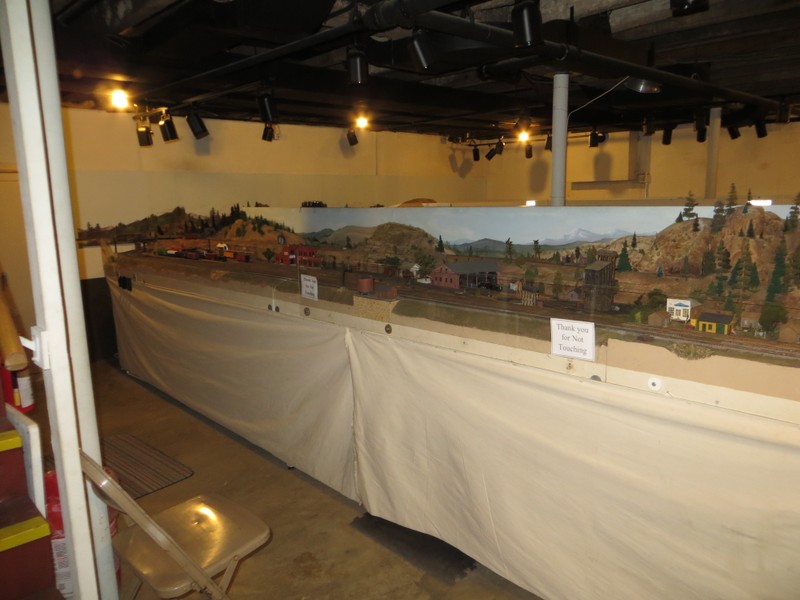
Front porch
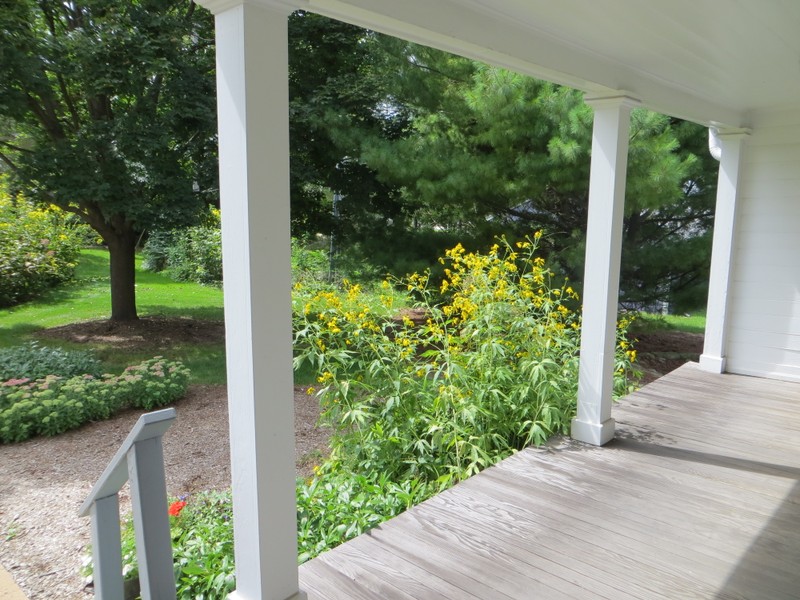
Backstory and Context
Text-to-speech Audio
The Netzley/Yender House
This home was built in 1858 and 1859 by Jacob and Mary Netzley’s family after their first home here was destroyed by fire. It was built in three phases and includes front and back porches, as well as a home garden. The first portion included only a family room and two bedrooms above it. The second portion was a much larger four-square style addition with two floors of rooms and an attic above that. The third phase was a summer kitchen attached to the first portion. The tall, evenly spaced windows are of the Greek Revival architecture style. Multiple doors throughout the home allowed for airflow and separate access to rooms by family members and by guests. George Yender puchased the property from the Netzleys in 1910. It was used as a family home as well as for working for most of its history.
George and Mary’s son, Andy and his wife Vi, sold the property to a local car dealer and they all worked together to donate the home to the Lisle Park District in 1986. It was moved here from its original location near the current intersection of Ogden and Western Avenues for use as a museum. A modern basement was added, and local mason apprentices set the exterior stone base facade
The Netzley Family
Jacob and Mary Netzley immigrated with their children to the United States in the 1840s from Swizterland. They were weavers by trade and members of the Anabaptist sect Church of the Brethren. The Netzleys settled for a time in south central Lititz, Pennsylvania, where there were established community groups of Brethren as well as other Anabaptist communities such as Amish and Mennonite. Feeling that this area was becoming crowded, Jacob and Mary decided to move further inland by water and by land. They passed through the more urbanized Chicago and settled in a budding farm community called Lisle with their 10 children.
Jacob and Mary purchased a home from James Pelling near the river and began their weaving trade once again as well as farming for food. In 1858 during a cold night, a fire spread from the fireplace into the rooms during the middle of the night and destroyed the home. Everyone escaped safely, but rebuilding began almost immediately as winter was coming. Jacob and Mary had a total of 15 children, although they all did not live in the house at the same time since the oldest ones moved out to establish their own families. Netzley family members lived in this house until it was sold in 1910.
Hearth Room
This portion of the home was used as a kitchen and family room for daily activities. The front door leads to a porch while the back door led to the outhouse, home garden, and farm land. Jacob and Mary likely worked on carding wool, weaving cloth items in this room until the house was expanded. The Weaver’s Delight floor loom is automatic, using tension springs to ease the hard work of making cloth. This is an example of the kind the Netzleys would have used.
The fireplace is original and constructed for cooking as well as heating the room during cold months. The swinging pot holder and adjuster arm was forged in the museum’s Blacksmith shop by volunteers. On the east wall you will see a framed section of wall. This is the original wood graining that the Netzleys hand painted when the home was first built. Various types of wood were used to construct the house and the planks did not always match in color or size. A primer (in blue) was applied, then coats of browns were applied and textured using a scoring tool to make it all look like wood. Museum volunteers restored the rest of the walls using this technique to show what the rest of the room looked like.
Original Upstairs Bedrooms
The first portion of the house included two bedrooms above the Hearth Room. A vent in the ceiling allows heat to rise into the children’s bedroom, while Jacob and Mary slept in the other bedroom room with newborns. The whole family lived and slept in these spaces until the second portion of the house was completed, which included more than 7 children at the time. The hallway stairs leading up to the bedrooms includes a framed section of wallpaper that was uncovered during the home’s museum restoration.
Four-Square Section
A four-square building contains one large square area split into four equal-sized square rooms. The Netzleys built the second portion of their home in this way. The first and second floors each contain square rooms, although the parlor rooms contained a temporary wall to create a larger space when needed. These rooms were used as bedrooms, playrooms, storage, for entertaining guests and holding church services. The local Church of the Brethren community began meeting here led by Deacon Jacob Netzley. During the 20th century, traveling railroad workers rented rooms from the Yenders. It is likely that weaving work was moved from the Hearth Room to one or more of these rooms after it was built. The third floor attic was used for storage and designed to provide a warm winter home for local pollinating insects. Bees could fly through bee slots built into the side of the home and winter here. This allowed them to begin pollinating crops earlier and bolster the growing season. These bee slots are visible from the outside on the current east side of the home.
Double Parlor
The Double Parlor is actually two four-square rooms that had a temporary wall instead of a permanent one so that the area could be opened or separated as needed. The Netzleys were the first members of the Church of the Brethren to come to the Lisle area. As more families from this community came, Deacon Jacob held church services in this room until a permanent church was built in Naperville. Two doors exist to allow people to enter and exit without disturbing the family’s Hearth Room space, typically one for men and one for women and children. The current wallpaper is a reproduction created based on the wallpaper designs revealed during museum restoration. Original wallpaper samples are currently preserved in the museum’s permanent artifact collections.
The Yender Family
Francois Xavier Jenter (Frank Yender) and his wife, Marie Francoise Jenter (Frances Yender) immigrated to the United States c. 1844 from Alsace, France with their two young children, a third being born a few years after arriving. They lived on farm property near the river and just off of the Southwest Plank Road. George, Sr. was the oldest of their children and lived on the same property as an adult. His son, George A. Yender, purchased Jacob Netzley’s property in 1910 and married 19-year-old Mary Letcher three years later. Mary was orphaned at 11 years old and grew up as a foster child working for a couple who owned a farm in Naperville.
Mary Yender operated a local country store next to their home, Yender’s Grocery and Market. George Yender ran a dairy farm business across the street, called Yender’s Guernsey Farm. The farm and home garden provided most of the produce for the store in the earlier years, although in later years they would bring in items from outside of Lisle. A road in this northwestern area of Lisle bears the Yender name. George passed away in 1961 and Mary passed away in 1978, leaving the home to their second oldest, Andy. Andy and Vi volunteered at the museum to tell their stories until they passed away after 2000.
First Floor Bedroom
The four-square room closest to the back porch was used as the bedroom for parents and newborns. The side door leading outside allows for adults tending the farm fields or home garden to easily access these outdoor areas. George and Mary Yender had four boys – George, Andy, Paul, and Raymond – the first three being born here in this bed.
Summer Kitchen
The Summer Kitchen was the third portion of this home to be built. The Netzleys built a beehive oven, designed to pull hot air out of the room. This made the summer kitchen it more comfortable to use during hot months as its name implies. This is a food preparation area, with its long tables, dry sink, smoke room, and hangers for drying herbs grown by the family. The side door lets out directly to the home garden to harvest vegetables, fruits, and fresh herbs. Many homes, large and small, included a summer kitchen on their property and were used in similar ways by the people responsible for cooking the family’s meals – in our case, the Netzley Family. The Summer Kitchen was attached to the house originally, even though quick changes in the room’s air pressure could cause fire to escape out of the beehive oven and into the room. After some years and a few fire accidents, the Summer Kitchen was detached from the house. The Yenders also used this space for food preparation and kitchen space.
When the Netzley/Yender House Summer Kitchen was moved to its museum location, the room and oven were disassembled completely and rebuilt attached to the home as it had originally been. Volunteers found a brick with the imprint of a child’s footprint and another brick with a dog’s footprint during this time. These were made when the bricks were still soft, probably while it was being built, and are currently preserved in the museum’s artifact collections.
Summer Kitchen Beehive Oven
This cooking oven is the centerpiece of the summer kitchen. It is built in such a way that much of the heat is pulled up the flue and out of the chimney instead of heating the room like a hearth fireplace, allowing for comfortable cooking during hot days. The cook builds a wood fire at the front of the oven then lights a spark at the top inside flue area. This heat rises up causing a consistent pressure flow upwards within the oven and the fire is moved further back into the oven. The cooking area is 5 feet deep, creating hotter and cooler parts of the oven to cook different kinds of foods at the same time. It is operated today and used for demonstrations during major events and scheduled field trips.
Summer Kitchen Smoke Room
The smoke room was used to preserve food so that it could be store longer without spoiling. Smoke rooms and smokehouses were very common before the invention of refrigeration and oftentimes were separated from the home to accommodate the amount of food being processed. There is a small door at the bottom left of the beehive oven where a tiny wood fire is built. Smoke from this fire rises through the hole in the wall to dry out meats and cheeses that had been prepared with salt, another preservation material. This room also serves as storage for cooking tools. If you smell a telltale smokey scent in this room and the summer kitchen, it is left over from the decades that this room was used by generations of Netzleys and Yenders. Smoked foods are still made in similar ways to this day, although the equipment and rooms have been modernized with steel and other materials.
Model Trains: To Lisle and Beyond
The current basement of the Netzley/Yender House is a modern one built when the home was moved to its museum location. Park District staff and volunteers from the Lisle Model Railroad Club created an HO gauge model train set. This display has three-dimensional scenes from the Lisle area as well as places in the western and southern United States that the Burlington Railroad could take you to visit. These round-trip, scenic vacations packages were offered by the Burlington starting in the early 20th century. Our train set has everything from farms and shops to mountains and ponds. Interactive press-buttons play the sound of Lisle station agent hard at work in a scale model of the 1874 Lisle Depot, dairy cows grazing, lights in store windows and street lamps, and even features people taking advantage of a tiny pond during different seasons. Volunteers care for the exhibit during most Tuesday mornings, and tours of this exhibit for individuals and field trip groups can be scheduled with museum staff. The model train set is in full use during our major annual events, Depot Days in September and Once Upon a Christmas in December.
Sources
Resources collected and researched by The Museums at Lisle Station Park (MLSP) staff and volunteers
MLSP
MLSP
MLSP
MLSP
MLSP
MLSP
MLSP
MLSP
MLSP
MLSP
MLSP
MLSP
MLSP
MLSP
MLSP
